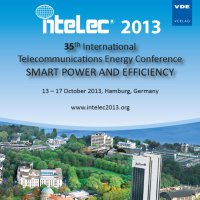A High Efficiency Single-stage PFC by Integrating Boost and Buck with Two Switches
Conference: Intelec 2013 - 35th International Telecommunications Energy Conference, SMART POWER AND EFFICIENCY
10/13/2013 - 10/17/2013 at Hamburg, Deutschland
Proceedings: Intelec 2013
Pages: 4Language: englishTyp: PDF
Personal VDE Members are entitled to a 10% discount on this title
Authors:
Lin, Weiming; Cui, Hong; Zhang, Qiang (College of Electrical Engineering and Automation, Fuzhou University, Fuzhou 350108, P.R.China)
Abstract:
The power supplies usually consists of two stage power converters, which combining the power-factor-correction(PFC) converter circuit with DC-DC post-regulator converter circuit in order to comply with various worldwide specifications governing the harmonic limits of the line current. In general, the Boost converter has been widely used as a PFC circuit. As the power levels are increased, however, the full-bridge diode rectifier reduces the converter efficiency due to the large conduction losses. To overcome the drawback of the conventional boost converter, the bridgeless boost rectifier has been investigated. By essentially eliminating the full-bridge diode rectifier, the conduction losses are reduced. However, circuit actually has two energy conversion stages which leads to higher conduction loss in the circuit. In this paper, a research was done on a high efficiency single-stage power converter is proposed for power supplies. The circuit configuration is shown in section I. A bridgeless boost rectifier with half-wave rectification with high power factor and lower conduction losses is proposed for a PFC circuit. Thus, power efficiency is increased through bridgeless Boost PFC rectification and the single-stage operation of the switching devices. The analysis of the proposed converter is presented and the design considerations for 220Vrms, 300 W is discussed. Section II illustrates the various modes of operation for the proposed. A prototype of the single-stage topology proposed has been built and fully tested. The observed waveforms of input voltage and input current to the proposed converter are shown. In experiment, A high power efficiency 97%@220Vrms and a power factor 0.99@220Vrms were achievedr.


